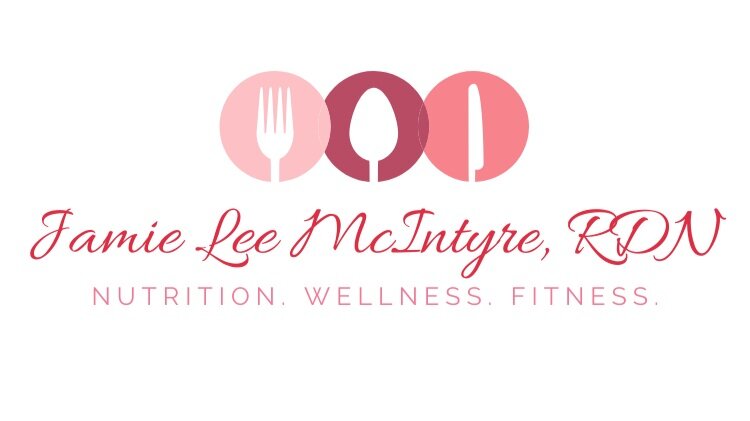Work From Home Healthy Habits
Have you recently made the transition to working from home from working in the office? Challenges of working from home include the lack of structure in schedule, the lack of influence of from others around you to take a stretch or lunch break, the easy access to food all day, the home-life distractions, and the promotion of sedentary behaviors. However, there are many pros to this situation as well. Benefits of working from home include having more flexibility in your schedule, having access to your personal choice in food, the absence of a commute and stress from everyday transportation, and the general comfort of your home. Getting accustomed to your new environment and situation may take time, but with a few pointers to keep you mindful, you’ll feel comfortable and productive in no time.
1. Set the tone for productivity.
Set up a designated workspace in your home separate from the kitchen and preferably by a window so you cue into the time of day. Get up, get dressed, and get ready even if you won’t be meeting with others in-person. Ideally, dress for physical activity so it is easy to engage in exercise during breaks like taking a walk or following a 7-minute workout video.
2. Prepare and plan.
Just as you would pack meals and snacks for the office, pack them for the workday at home so you take the guess work out of mealtime. You can even label foods “Breakfast,” “Lunch,” and “Snack” or use post-it notes as a reminder on the front of the refrigerator. Also, remember that “out of sight, out of mind” and the opposite is true. So, wash and cut fresh fruits and vegetables and store them at eye-view in the refrigerator so they’re hard to miss. Work this prep into your morning or night routine. Then, when you begin to think about eating, take a moment to identify TRUE Hunger. Avoid eating for stress relief, boredom, and anxiety. This is important to establish control when there is easy access to food. I recommend to actually schedule in your lunch and snack breaks into your Outlook, Google or phone calendar and set reminders so you know to eat when your body most needs it.
In order to follow through with the above, you’ll need to have resources and a stocked kitchen. If you don’t have time to shop, consider grocery delivery like Instacart, Pea Pod, and Fresh Direct. You can also have some fun and experiment with Meal Kit Delivery programs like Hello Fresh, Blue Apron, and Sun Basket. For the VERY busy individual, you may even find it helpful to supplement with prepared meals like those from Freshly.
3. Balance your meals.
A balanced meal should include 1 serving from 3-4 different food groups. There should be a focus on FIBER + PROTEIN as this specific combination promotes early and long-term satiety, as well as blood sugar control which is important for focus and energy. While a bagel won't keep you fueled very long, a whole wheat wrap with tuna, lettuce and tomato, with a side of baby carrots will keep you fueled and full for hours. Click here for more details on planning balanced meals.
4. Balance your snacks.
You will most benefit from a snack when going longer than 4.5+ hours between meals. Plan a snack (usually only needed once or twice a day) to be midway between the two meals spaced furthest apart in your schedule. Focus on combining FIBER + PROTEIN as in the examples below.
1 cup sugar snap peas + 5oz plain nonfat Greek yogurt with 1/2 tbsp dry ranch seasoning mix + 1/2 whole wheat pita
1 cup veggies with 1/4 cup hummus + 2 cups microwavable light popped corn
1 apple + 1.5 Tbsp nut butter
1 cup fresh berries + 5 oz low fat cottage cheese
1 orange + 1 part skim cheese stick
1 cup pineapple + 6oz plain low fat yogurt blended
2 cups watermelon + 5oz low fat Icelandic style plain yogurt
5. Remember to hydrate!
Keep a refillable water bottle handy all day and refill regularly. Drink 8-16 oz water before every meal and snack to control your appetite. Feeling cold? Drink hot water with lemon or herbal tea. Maybe you’re hot? Drink iced water with frozen fruit, cucumber slices or fresh mint to make it more appealing. Interestingly, thirst cues mimic hunger cues in the body and can lead us to overeat when all we really need is some water to quench our thirst. Set reminders to keep you on track with proper hydration as well.
6. Make fitness happen.
Don’t forget to get up and move! Search apps and You Tube for guided exercise from fitness professionals. Bookmark fun and convenient methods to get physically active during your work-from-home days.
7. Find and utilize support.
Search your employers social media sites and corporate website for support systems in place to help you feel like part of a work community, even when working agile, and to promote productivity when working from home. Freelance or independent contractor? Band together with like minded professionals who work out of a home office to create a sense of accountability and community.
Looking for some sample schedules and meal plans to get started with? Here’s an example from one of my REAL work-from-home days!



